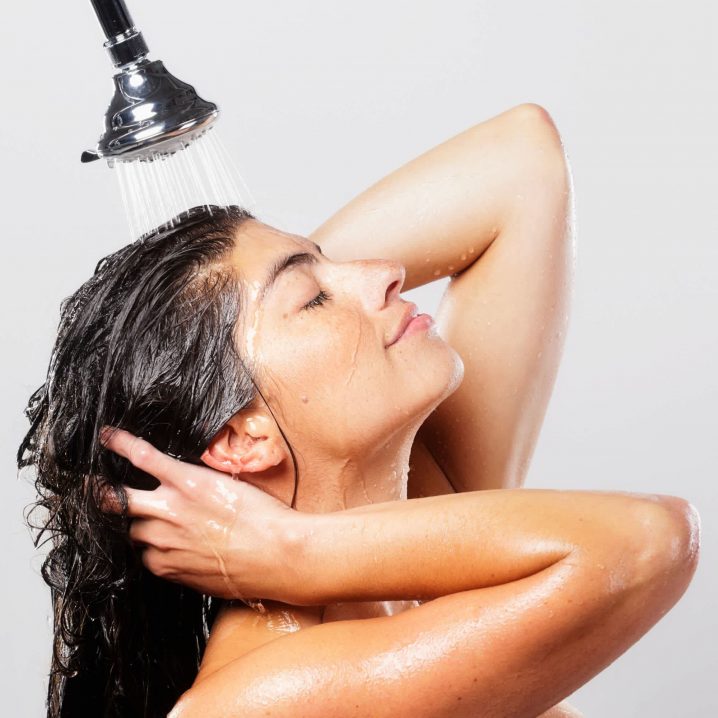
- POPSUGAR Australia
- Beauty
- Reverse Hair Washing Might Be Great For Your Blowdry – But Is It Good For Your Hair?
Reverse Hair Washing Might Be Great For Your Blowdry – But Is It Good For Your Hair?

Reverse hair washing is a popular technique for giving fine, limp, or greasy hair volume. If you’re the type of person who pays for a professional blowout, only to find it droops in seconds, this could be a great solution for you.
But how does reverse hair washing work, and is it actually good for your hair?
I have fine, “heavy” (there is a lot of it and it’s a little…greasy) hair.
Prior to discovering reverse hair washing my main solution for giving my locks some volume was a blast of Batiste.
Like all good things, I discovered reverse hair washing on Instagram where the method is popular with social media savvy dermatologists and trichologists as a hack for those with fine hair, greasy scalps and brittle ends. I can confirm reversing the order of your hair products boosts volume and extends the time between washes. But how good is it for your hair?
What is Reverse Hair Washing?
For the unacquainted, reverse hair washing is pretty simple. The process involves applying your haircare in reverse order.
Garekars MD Dermatology Clinic’s Instagram has a pretty solid explainer on the process. They outline two steps:
- Wet your hair and apply conditioner, focusing on the bottom two thirds where the hair is in most need of hydration. Garekars recommends leaving in for five to ten minutes. As an artificial blonde, I like to accelerate this treatment by applying a deep conditioner to dry ends. The ever-popular Olaplex No. 8 Bond Intense Moisture Mask ($50.00) is a classic and Oribe’s Deep Treatment Masque ($92.00) I massage it in then go about my business for 5-10 minutes before hopping in the shower.
- Shampoo as usual. If you’re looking for a volume boost using a specific densifying treatment like Alterna Hair Clinical Densifying Shampoo ($55.00) or the Redken Detox Hair Cleansing Cream Shampoo ($31.00)
So, What Does Reverse Hair Washing Do To Your Hair?:
The theory behind reverse hair washing is that the high pH of shampoo makes the hair at the roots “swell” looking thicker and denser. Meanwhile, the pre-wash coating of conditioner protects your ends, while not weighing them down.
As someone who has tried reverse hair washing a few times, the results can be addictive. But they can also be drying, and the science behind reverse hair washing is pretty clear.
An article published in the International Journal of Trichology outlines how shampoo interacts with hair follicles. It summarised that the alkaline pH of some shampoos, particularly clarifying formulas, “increase the negative electrical charge of the hair fibre surface. This may lead to cuticle damage and fibre breakage.” This is why it is recommended that you use shampoo first, then conditioner to “seal.”
The journal explained that anionic agents in most shampoos leave an alkaline residue in the hair. This can leave strands “opaque and tangled.”
Essentially, the reverse hair washing method works well because it roughs up your hair shaft – achieving bulk at the roots the same way teasing does. Done before an event this is fine, but long term, the method can cause cuticle damage and fibre breakage. Essentially “roughing up” the hair shaft can cause bulk but using this technique long-term can cause “cuticle damage and fibre breakage.”
Ultimately? Reverse hair washing is a great hack pre-event or travelling, but you should probably alternate it with regular hair washing in the interests of long-term hair health.


